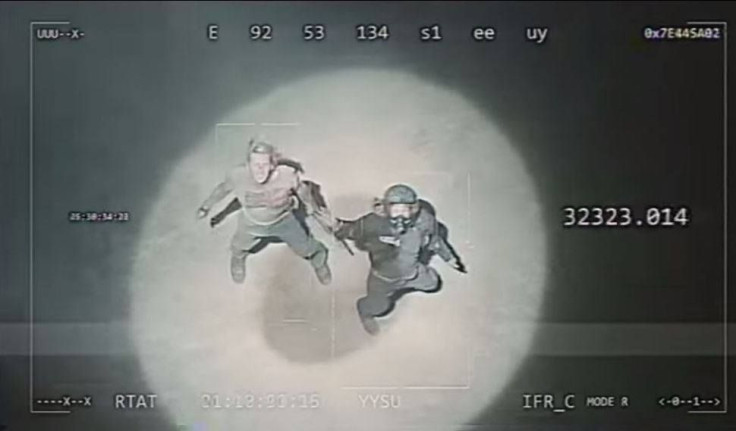The Phoenix Incident begins before the production company logo with a special message from a journalist whose backstory is suspiciously similar to Fox Mulder’s (abducted sister, seeker of truth). It’s the first indication that The Phoenix Incident, at least in its first half, is deeply invested in the documentary conceit. Director Keith Arem wants you to turn to the person sitting next to you and ask, “Wait, how much of this footage is real?”
It’s not a wise investment and seems to have missed something essential about the ad hoc collection of gimmicks and tropes that have grown into the genre of found footage / mockumentary.
Congrats to the @phoenixincident team. Check the premiere tomorrow in select theaters. https://t.co/dsWMlreZ1A pic.twitter.com/kMfPAEg04c
— Ice Cube (@icecube) March 9, 2016
Documentary and mockumentary both use collage, but to opposite effect. Cloverfield shot around the monster, the form used to avoid the central object of our interest. The Thin Blue Line is constructed around an unknown: what really happened to Robert W. Wood? The found footage form obscures what could be shown, whereas the documentary attempts to construct order and truth around lost facts and epistemological unknowables.
The Phoenix Incident tries to have it both ways, using all the tools of documentary, especially talking head interviews, to illuminate the fictional disappearance of four young men during the real life mass UFO sighting that became known as the Phoenix Lights. After dancing around the events as if they were mysterious, The Phoenix Incident goes ahead and shows you the whole incident anyway, caught on tape by your typical maniacally dedicated found footage cameraman.
This two-part structure shortchanges both halves of the film.
The dedicated simulation of a real documentary, while impressive in its doggedness, is necessarily inert. It can’t spoil what the movie will show you explicitly later, so the documentary half is left with little to do. Anonymous military whistleblowers are left with nothing much to say. To the extent that The Phoenix Incident feels like a real documentary, it’s a bad documentary that fails to get at any truth.
The second half reveals that all of the events that seemed mysterious and uncertain are instead fully understood. Abandoning all previous pretense of being documentary, The Phoenix Incident endgame is crammed with aliens, ATV chases, electric fences and shotgun battles. We witness the four deeply unlikeable leads butt heads with monsters and cult psychopath William Gayson, who feels like an invader from a much more knowingly hammy movie, with an acting style best suited to the Wyatt Family.
This back half is mortally wounded by having wasted so much time on documentary verisimilitude earlier in the movie. Because we’ve spent so long hearing various parents and uncles complain about the mystery of their disappearance, the actual characters are shortchanged. The first half would have been better spent on character or on a more explicit examination of the alien threat, whose motives are generically monstrous (why are creatures capable of building such fantastic ships no more than growling, brute hyenas on foot?).
The Phoenix Incident exposes and exemplifies a fatal weakness at the heart of the found footage / mockumentary subgenre. The more effort made to trick audiences with documentary reality, the more obvious a hollow center becomes.
The Phoenix Incident will be in theaters and available on VOD beginning April 8.







![Best Gaming Mouse For Gamers With Smaller Hands [2025]](https://d.player.one/en/full/227430/best-gaming-mouse-gamers-smaller-hands-2025.png?w=380&h=275&f=fdcf47c1c5fc58d1e41d3be505c12568)










